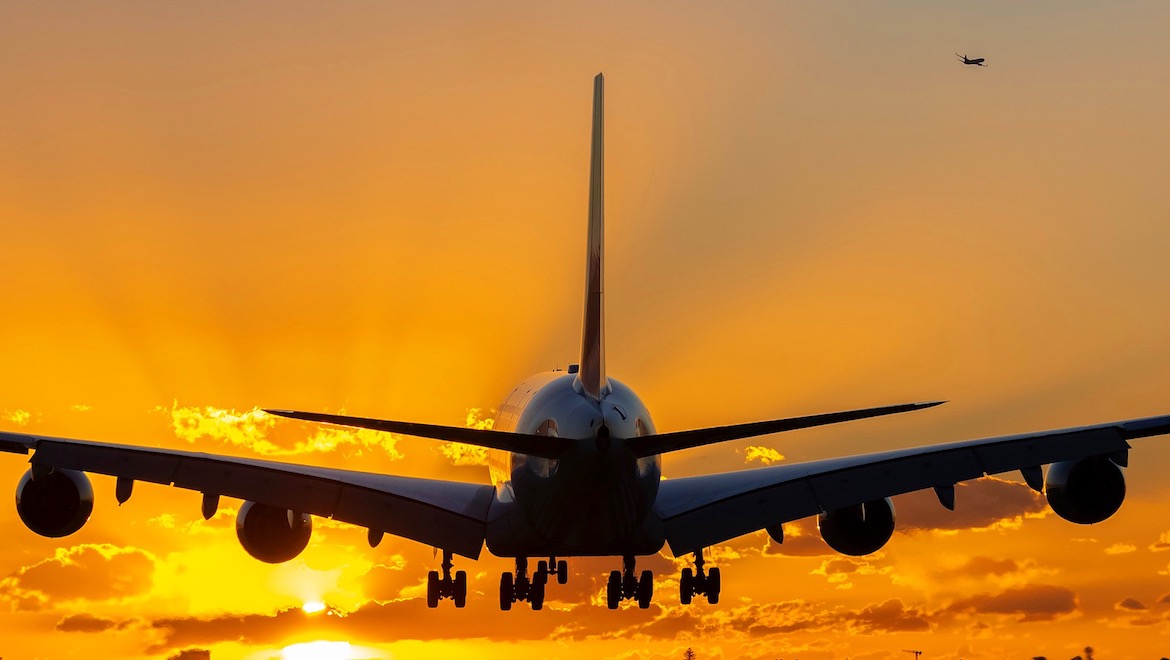
From the point of view of the aviation enthusiast, it was an awesome sight.
From the point of view of the rational aviation journalist, it was a sobering backdrop to a growing debate about the future of an aircraft type which first entered line service with Singapore Airlines 12 years ago with an economic promise as large as its double-deck profile.
I was on my way to Manchester from Brisbane to visit family, and it was a terminal change by bus in Dubai that brought home both the sheer weight of expectation in the future of the A380, and the astonishing commitment of United Arab Emirates carrier Emirates to its shorter-term viability and longer-term potential.
It is a commitment that, historically, far outweighs any other across the aviation industry.
Even in the dead of night, the windows of the transit bus provided a stunning view of Emirates A380 after A380 after A380. After a while, it was easy to lose count amid the thoughts of who, what, and when to where, would take up seats on each of these examples of the behemoth of the skies.
On the one hand, I was looking at a looming white-elephant aircraft running into a storm of doubt about future order delivery from which it might never recover; on the other, there were still claims of confidence and commitment to the ongoing future of the type as a high density passenger carrier with further promise as a cargo variant.
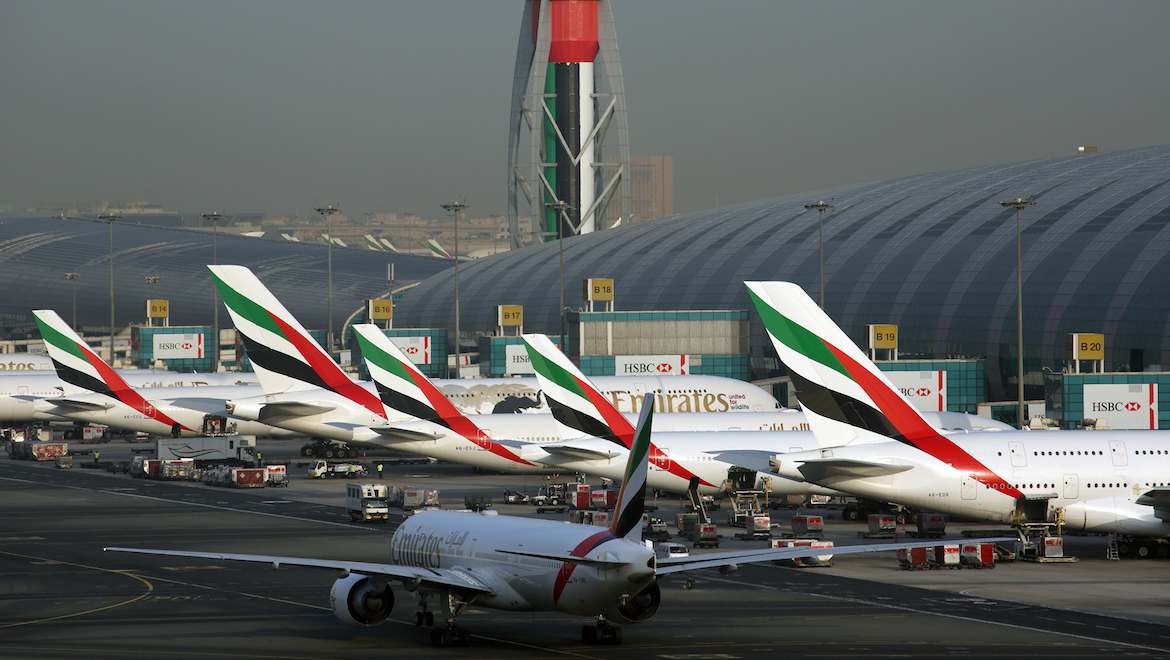
Passengers love it for its spaciousness; operators not so much for its return on investment – contradictions indicative of wavering within the industry that has cast a shadow over the aircraft almost since the day the 500-plus seat airliner took to the skies on a scheduled service.
The Airbus A380 was meant to revolutionise international hub-to-hub connections while delivering high-density mega-profit to operators. Subsequently, the reality has proved to be very different. The A380 has never been a profitable aircraft – and it all has to do with the financial return on seat occupancy per flight versus distance flown versus fuel cost.Put very simply: when a four-engine A380 is full, the economic formula tends to work. When it isn’t, it doesn’t.
The writing on the wall from the sceptics, who always viewed the A380 as overly ambitious, was underlined by the growing popularity for operators of long-haul, twin engine wide-bodies with the capacity to deliver customers direct to their destination: from international airport to national airport rather than international hub to international hub.
And in many ways Airbus, with its A350 in particular, has been the architect of its own A380 demise. And that’s before the aviation industry adds Boeing to the mix with its 777, and particularly the forthcoming 777-8 and 777-9 variants.
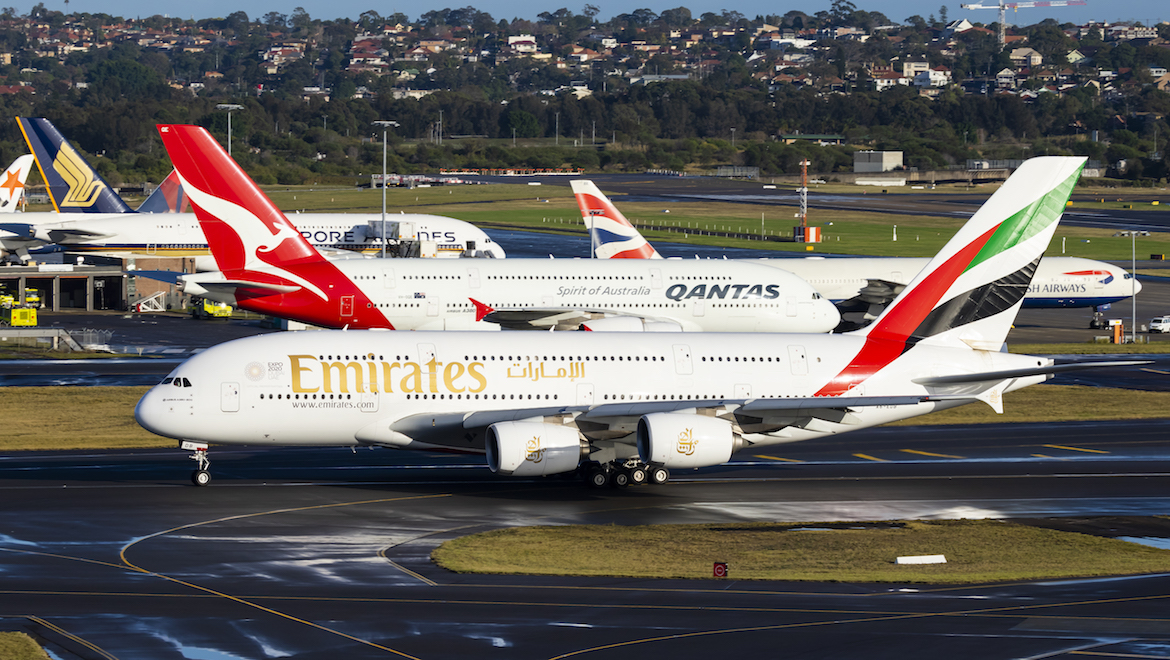
The end arrives
The game-changer came on Thursday, February 14, with the announcement by Airbus that it will close its A380 assembly line in the wake of an Emirates decision, the type’s biggest supporter, to cuts its A380 forward orders in favour of the A350 and A330neo.
Emirates said it would take up just 14 more A380s between now and 2021, bringing its total order book to 123 aircraft.
At January 31 2019, the A380 had secured 313 total orders for the A380, with 234 aircraft delivered. That left a backlog of 79 aircraft. Clearly, this backlog will shrink further once the Emirates’ decision is factored in.
In January 2018, Emirates signed a memorandum of understanding (MOU) to order 20 A380s and options for 16 more of the type. However, the MoU was never converted to to a firm order as negotiations with Rolls-Royce over the supply of engines failed to reach an agreement.
That, ultimately, forced Airbus’s hand on the future of the A380 program, given the lack of orders for the aircraft.
Emirates chief executive Sheikh Ahmed bin Saeed Al Maktoum said the airline was “disappointed to have to give up our order” and “sad” the program could not be sustained.
“We accept that this is the reality of the situation,” Al Maktoum said in a statement.
Al Maktoum said the A380 would continue to fly in the Emirates fleet well into the 2030s.
Rolls-Royce said it would provide Emirates with Trent engines for a further 14 A380s, which would bring to 33 the number of the type in the Emirates aircraft to feature those engines.
“This agreement supersedes previous deals with Emirates for a total of 52 A380 aircraft powered by the Trent 900,” Rolls-Royce said in a statement.
The whole engine debate has been significant to the overall future of the A380, led by its most significant worldwide customer.
Industry commentator Michael Goldstein, writing for Forbes in October, said that when the apparent cancellation of a deal for Emirates to buy 38 A380s in 2017 was retrieved in January of 2018 at a cost of about $16 billion, the airline – which operates the aircraft with both Engine Alliance and Rolls-Royce engines – said it was evaluating engine options.
Subsequently it appears there was a dispute between the airline and Rolls-Royce on price and fuel burn efficiency on engine upgrades.
Goldstein wrote: “Fuel economy is becoming increasingly important, even for a government-backed airline like Emirates in the oil-rich Gulf. Emirates turned to Rolls-Royce hoping that the newest A380s would deliver enhanced economy as well as power. News that the new engine is falling short of efficiency and performance metrics, on top of the well-publicised problems with Rolls-Royce engines in the Boeing 787 Dreamliner, is not promising for the future of the A380 program.”
In its statement following the Emirates cancellation and the Airbus announcement, Rolls-Royce said its backlog for A380 engines stood at 17 aircraft, including those headed for Emirates.
Further, the company said it would support the whole Trent 900 fleet in service throughout its lifetime.
“The A380 is a world class feat of engineering, much loved by passengers, and we are obviously saddened that deliveries will come to an end,” Rolls-Royce president for civil aerospace Chris Cholerton said.
“We are very proud to have supported the aircraft with our Trent 900 engine. We look forward to supporting the fleet, as the A380 continues to delight travellers, for many years to come.”
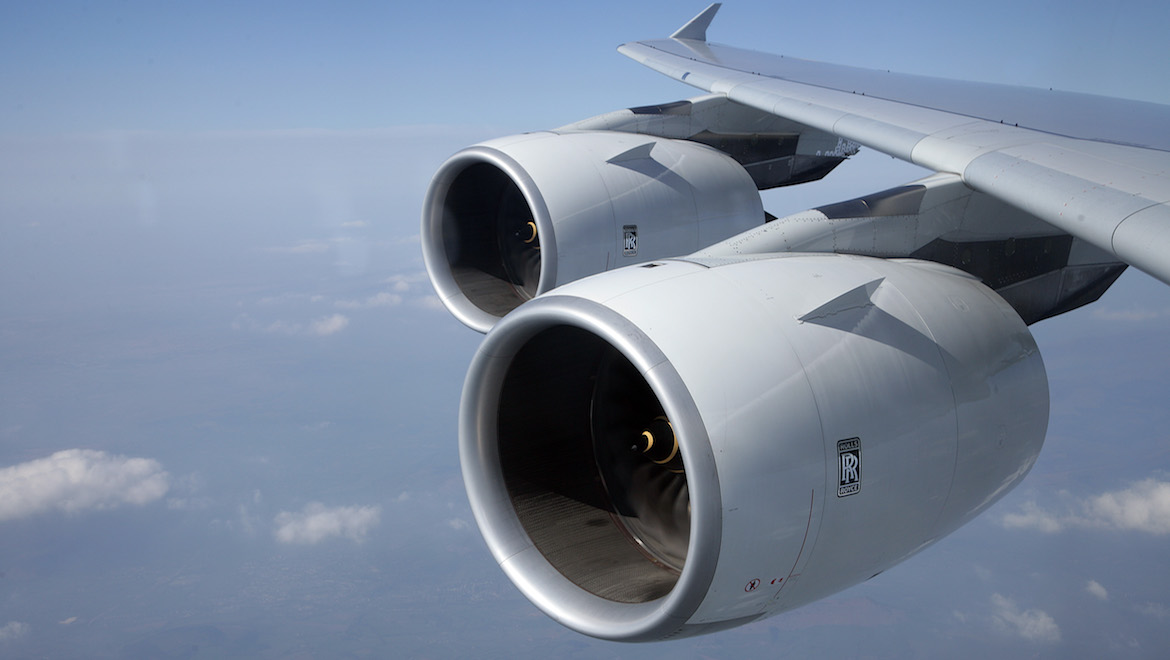
From an Australian perspective, the jitters were more than obvious in February when Emirates alliance partner Qantas officially cancelled its outstanding order for eight A380s, part of an order for 20 A380s made in 2006.
“Following discussions with Airbus, Qantas has now formalised its decision not to take eight additional A380s that were ordered in 2006,” it said in a statement.
“These aircraft have not been part of the airline’s fleet and network plans for some time.”
It was a cold, hard but genuine reflection of the overall industry’s view of the A380, reflected in the Airbus Orders and Deliveries summary for January 2019 – and this from one of the original flag carriers to take delivery of the type behind launch customer SIA (2007) and Emirates (2008).
Qantas’s first A380 was VH-OQA Nancy-Bird Walton. Eleven more followed, with the 12th, VH-OQL Phyllis Arnott, delivered in December 2011.
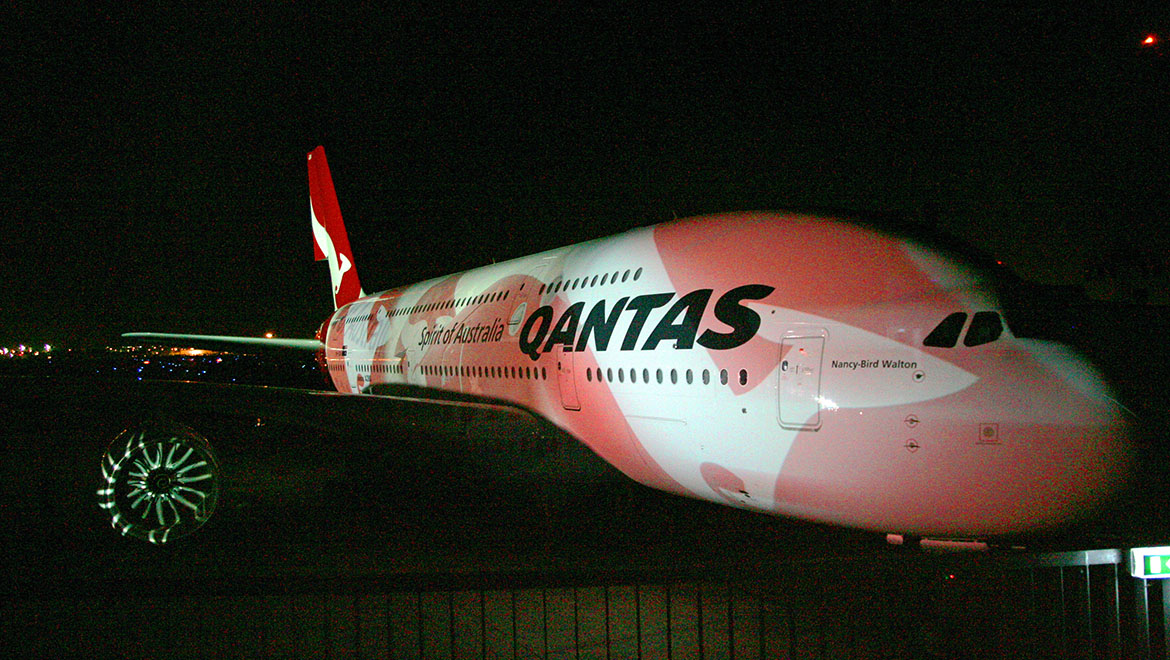
The first long-haul service was Melbourne-Los Angeles which kicked off on October 20 2008 and the network gradually expanded to include Sydney-Los Angeles, Sydney-Singapore-London and Melbourne-Singapore-London.
For Qantas, the A380 established new nonstop routes such as Sydney-Dallas/Fort Worth, replacing the Boeing 747-400ER which previously operated a Sydney-Dallas/Fort Worth-Brisbane-Sydney rotation. For a time it was the longest nonstop airline flight in commercial aviation.
And Qantas has also in recent times deployed the A380 to Hong Kong, adding extra capacity during peak travel periods such as Chinese New Year and school holidays.
Initial plans had Qantas potentially operating up to 30 A380s. However, the firm order book eventually stood at 20 aircraft.

So what truly went so wrong?
Other than significant engine issues and a squabble between the European Union (EU) and World Trade Organisation (WTO) over subsidies to the Airbus program from the French and German governments, the A380 has been a good example of over-promise and under-delivery.
Originally, it was pitched as the perfect mass transport vehicle (and with capacity for 550 more than an eye to Asia and the burgeoning Middle-Eastern aviation markets) with the potential for bulk transit in economy and new levels of luxury in first and business.
But the initial rush to embrace the concept became just that and the reality is that the program, despite its promise, has never returned a profit on an investment of around US$20 billion and the prospect of orders of around 700 that dwindled to actual delivery in the 230s.
According to senior US business analyst Vinay Bhaskara, writing in Airways magazine, the core of the Airbus pitch for the A380 in the early 2000s was the notion that the focus of the long-haul business model would be so-called hub-to-hub flights.
Essentially, he wrote, the thesis went that long-haul and high-volume medium-haul flying between big markets would be handled primarily by the A380, while medium and short-haul connections at those markets would be handled by the 767/777/A330/A340 and narrow-bodies, respectively.
“It wasn’t a horrible thesis — at the time the Boeing 747-400 was a wildly successful plane that was used by airlines around the world in precisely this manner. Meanwhile, the long-range versions of the 777 — both -200(ER) and 300(ER) —hadn’t formally entered service, and the longest ranged jets (the 747 and the A340) were both quad-jets.
“The problem for Airbus was that this thesis was dependent on an international airline hub structure. The model looked a lot like that of the early 1990s, with 15-20 major global hubs.”
Bhaskara wrote that, at a glance, these would include, among others, London-Heathrow, Paris-Charles De Gaulle, Frankfurt, Tokyo-Narita, Taipei, Hong Kong, Singapore, Sydney and Los Angeles.
That has now been superseded by the ability of smaller but no less significant capital city airports capable of handling direct flights by high capacity, widebody twins that are easier to fill than the 500-plus seats on the A380 and more popular with passengers who want to get from A to B by the most direct route.
That on top of a greater return on fuel efficiency and airport turnaround while delivering the same range as the A380.

Hence the rise to prominence of the long-range 777s and more recently the 787 and A350 with the prospect of an even more economical 777 variant in the wings (the -8 and -9).
Putting it more succinctly, Daniel Thomas, business reporter for the BBC, said that while Airbus was taking a multi-billion-dollar bet that airlines would want big aircraft in the future, Boeing was developing its smaller, nimbler (and seemingly more successful) 787 Dreamliner.
Tim Hepher, writing for Reuters, puts it this way: Airbus boasted it would sell 700-750 A380s and render the 747 obsolete. In fact, A380 orders barely crossed the 300 threshold and the 747 has outlived its rival after reaching the age of 50.
(Don’t miss the 747 50th anniversary feature in the March 2019 edition of Australian Aviation magazine, on sale at newsstands from February 28 2019).
The seeds of the A380’s fall from grace, Hepher wrote, were already present behind the scenes of the 2005 launch party.
“Despite public talk of unity, the huge task was about to expose fractures in Franco-German co-operation that sparked an industrial meltdown. When the delayed jet finally reached the market in 2007, the global financial crisis was starting to bite. Scale and opulence were no longer wanted. Sales slowed.
“At the same time, engine makers who had promised Airbus a decade of unbeatable efficiencies with their new superjumbo engines were fine-tuning even more efficient designs for the next generation of dual-engined planes, competing with the A380.
“Finally, a restless Airbus board started demanding a return and stronger prices just when the plane desperately needed an aggressive relaunch and fresh investment, insiders said.
“It was a triple whammy.”
VIDEO: A look at the first flight of the A380 in April 2005 from the Airbus YouTube channel.
Meanwhile, in something of an ironic shift that underlines the succession of the widebody twins, Emirates signed a heads of agreement for 40 A330-900 and 30 A350-900s, with deliveries starting from 2021 and 2024, respectively, as part of its restructured order book with Airbus.
Al Maktoum said the two aircraft types would give the airline the flexibility to meet “seasonal or opportunistic demand”.
The A330-900s would be deployed on regional routes, as well as enable the airline to serve smaller airports and open new routes.
Meanwhile, the A350-900s would be used on long-haul routes of between eight and 12 hours duration from Dubai.
Emirates had previously been an A350 customer, having ordered 50 A350-900s and 20 A350-1000s in 2007. However, it cancelled the order in 2014 following the airline’s fleet review and delays to the A350 program.
Airbus had been hoping to win Emirates back to the A350 as the airline restarted negotiations with both Airbus and Boeing for its future widebody needs.
Instead, it was Boeing that secured an order for 40 787-10s announced at the 2017 Dubai Airshow. The aircraft were due to be delivered from 2022.
It remains unclear whether Emirates is keeping the 787-10 order, which was never firmed up and does not appear on the orders and deliveries section of the Boeing website.
Back at Qantas, investment in the A380 feet is continuing despite the formal cancellation of the order for eight new aircraft.
The airline is conducting what it describes as a multi-million dollar upgrade of the aircraft’s interiors.
The mid-life refurbishment program, which is being managed by Airbus, includes replacing the SkyBed II business class and premium economy seats with a similar product to what appears on Qantas’ Boeing 787-9s and Airbus A330s, a new upstairs lounge area and an enhancement of its first class offering.
The work was due to get underway by the middle of this year and be completed before the end of 2020.
“Qantas remains committed to a major upgrade of its existing A380s, which begins in mid-calendar 2019 and will see us operate the aircraft well into the future,” it said in a statement.
As Qantas usually operates aircraft for about 20 years, a decision on what aircraft will eventually replace the A380 in the fleet will not have to be made for quite some time.
[vc_gallery interval=”0″ images=”69297,67685,69298,69299,69302,57186,42991,46710,69300,43895,68785,50823,69303,69301″ img_size=”750×420″ title=”The A380 in various airline liveries”]
Listen to Australian Aviation’s podcast about the 10-year anniversary of the A380 in Qantas colours, recorded in September 2018.




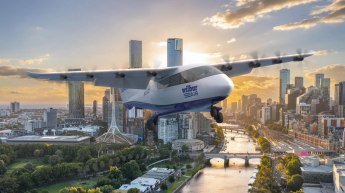











David
says:so as A380 come off lease & go to charter operators like Hifly, will they jam in as many seats as possible, to lower the per seat cost ? There was talk at one stage of an all economy A380 with 800 or so seats, although costs to convert a 3 class to 1 class might be prohibitive. Perhaps a small premium class, with 700+ seats in economy ?
Adrian P
says:So deep vein thrombosis is a thing of the past and as personal technology has evolved so have we.
We can now sit in front of a screen for over 20 hours and have no ill effects
Charles James
says:Airbus unfortunately have a knack of producing design failures. The A340 lasted only twenty years in production with 377 delivered. Now the A380. Boeing’s 747 is still being built 50 years after its maiden flight. I’m sure the A350 will be a success for Airbus like the 777 and 787 has been for Boeing. What is the common factor for the failure of the Airbus duo and success of the Boeing twins? The engine count and the relative efficiency of two engines over four. Economic factors dictated the success of the Boeing products and the failure of the Airbus products.
chris kleeman
says:377 A340 wide bodies and 20 years production is classified as a failure ,you must be joking
John
says:When you compare 1,582 B777 airframes built within 25 years of production, the A340 was a failure.
hadfj
says:A330 runs the same airframe, wing, avionics, systems and undercarriage as A340 and together more have been built than 777 if that’s your measure for success.
hadfj
says:Engine count is not the issue, it’s the overall package. The weight of the A380 ballooned for various reasons but not due to using four engines. Two 787-9s equals four engines but is cheaper to run than a single A380.
john doutch
says:The above proves Boeings philosophy that point to point was the way to go. The million dollar question. Does QF select the A350 or the Boeing equivalent??
Bob Grimstead
says:A major problem all along has been that the A380 is tens of tonnes overweight, a problem Airbus has done its best to keep secret, but which resulted in upper deck bars and lounges because the aeroplane just cannot carry the passengers and freight that it should.
Paul
says:It is ironic that the 380 demise was hastened by the efficiency of wide body twins, such as the 777,787 and A350, and yet it was Airbus who built the first ever wide body twin, the A300!
As a passenger the 380 is a superb Aircraft to fly on, much quieter than a 777 747 330!
Boeing’s bet on the 787, and more direct flights between city pairs has proven a winner, the Airbus strategy of bigger aircraft flying between mega hubs, not so successful.
However while the 380 could bring more passengers per flight into these mega hubs, once on the ground, the congestion does nothing to encourage passengers to use them, eg London and Los Angeles, my last visit to London nearly 4 hours to clear immigration!
Interesting to see if the Qantas decision to cancel the remaining order for 8 380s, will see Airbus impose financial penalties, unless Qantas order some more Airbus aircraft, increase the exsisting 320/321 Jetstar order, or A350s?
Ben
says:The quads are done except freighters, the big twins are here to stay. Freight will keep the Queen flying for decades yet, something Airbus failed to make an option on the 380.
Adrian
says:@ Charles James Airbus built nearly 400 A340s so nowhere near the success of the A330 but not exactly a complete failure either. The common theme here is four engines. The Boeing 747 has also not sold well for many decades. The A320 is arguably the most successful airliner ever designed…..the A330 has done very well too as will the A350. If anything Airbus seems to have taken a few more risksand been more innovative and I salute them for that. Nothing will have been wasted from their time building A340s or A380s.
Geoff
says:You are right Adrian. Airbus have learned so much from both the advanced engineering and production methodology perspectives, from the A380 exercise. Hence, the A350XWB being the most advanced aircraft currently flying. A magnificent flying experience as is the A380!
The new 777-8 and -9 are modified and not entirely new. Still great aircraft however.
Adrian P
says:Remember when you come into land after 20 hours on a 787 the crew are just as tired as you are.
Geoff
says:The A340 was a success. Especially the -500 and -600 models.
Remember when SQ operated the longest flights in the world with the 5 -500’s. EWR and LAX from Singapore. So there you are. Wonderful machines.
Politics changes oil prices. This fickleness has a great bearing on aircraft programmes. We must see these situations within correct contexts.
Peter J CESNIK
says:Concorde was a technical marvel and an economic disaster…And so is A380…